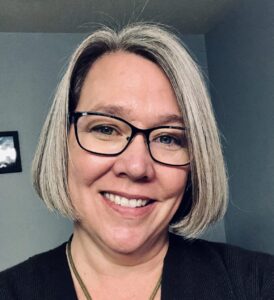
Factory Schools and Oceanic Schools: A Pandemic Shift
One of the realities that the pandemics of the past eighteen months have brought home is how the different life situations of students change the impact of collective trauma on their bandwidth for learning. For some of our students, when the world ground to a halt, they found themselves with more space to focus, to engage with what they were learning, to connect with others. For many of our students, caregiving for children and sick relatives, loss of income and economic stability including access to safe housing, increased incidences of domestic violence, threats of racialized violence in public spaces, life-and-death struggles with mental health conditions, or the high rates of infection and death in their communities made focusing on learning nearly impossible.
The dominant model of education that we work with in the United States is a factory model of schooling, developed within the shift to industrialization when we moved from a tutor/pupil dyad to a mass-produced improvement of worker skill. We put many bodies into a classroom with one teacher for efficiency, assume they all go through the same exposure to materials and activities for learning, and then grade the outcome on how well it measures up to some ideals set before we ever met the people who would enter our classroom. We started grading students at the same time we started grading meat and eggs, as products for consumption by the outside world. Those who don’t measure up are blamed for their lack of inherent ability or effort and failing them out is the responsible communication to the outside world of their individual deficiencies. It seems banal to have to name it, but this is a profoundly anti-relational and unjust mode of schooling.
Again and again in working with early career faculty throughout the last year, we reminded each other of some basic realities: we had to focus on what is most important in learning; we had to respect where are students are in the moment and what they are capable of engaging given their lived realities; we had to remember that care for students as complex humans and getting through this season is as important as whatever we felt we owed some discipline, administration, or future employer in terms of measurable skill or knowledge outcomes.
I have been reading Alexis Pauline Gumbs’ poetic marvel of a book, Undrowned: Black Feminist Lessons from Marine Mammals (AK Press, 2020). The collection originated as a series of online posts relating insights she had gained from learning about the colonizing classification and decimation of marine mammals in their encounter with white Western culture. She committed to becoming an apprentice to their wisdom in survival, adaptation, collaboration, and movement through the dangerous currents in which they found themselves. In a piece thinking about schools alongside marine mammals, Gumbs defines schools as “organizational structures for learning, nurturance, and survival, both intergenerationally and within generations” (55).
When Gumbs reflects on the schooling behaviors of striped dolphins as they faced the decimation of a disease outbreak in the Mediterranean Sea in the early 1990s, she notes:
What if school, as we used it on a daily basis, signaled not the name of a process or institution through which we could be indoctrinated, not a structure through which social capital was grasped and policed, but something more organic, like a scale of care. What if school was the scale at which we could care for each other and move together. In my view, at this moment in history, that is really what we need to learn most urgently. (55-56)
I heard the community of scholars gathered in the Wabash early career digital salon asking similar questions. What if we turned this factory model on its head and instead asked how we could care for each other in the classroom and move together so that at the end of term people knew more about what was critical to know than they did at the start of the term, but did so in a way that honored the scale of care in the midst of a culture experiencing the concurring pandemics of novel coronavirus and not-so-novel systemic racism and wealth inequality? We learned a little bit about what it meant to “school” as a community committed to the survival and thriving of generations during a season of marked crisis.
I don’t mean to romanticize this moment. Of course we did so in the midst of cultural calls for students to “go back to school” even as teachers at all levels were working tirelessly month after month to continue schooling despite enormous obstacles to learning. This public invisibility and cultural diminishment repudiated the ongoing schooling that was creating a “scale of care” for “learning, nurturance, and survival” from kindergarten to doctoral seminar. And, unlike Gumbs, whose work seeks to nurture emergent networks of activist belonging and communal resistance across and outside of institutions, in institutions of higher education faculty are embedded in late capitalist economies of exchange where investment and return, tuition and degrees, educational debt and faculty salaries are painfully and inextricably linked. To challenge the production models of social and economic capital in higher education for an organic model of caring for each other and moving together to adapt to existential threats is ironically to risk being called unprofessional, lightweight, irresponsible. However, developing such oceanic schooling may also be a revolutionary and adaptive response for survival in the midst of forces threatening to overwhelm the human species to extinction, from climate collapse to racism to economic inequality.
Leave a Reply